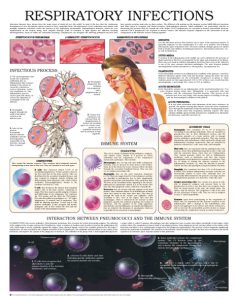Respiratory infections
Infectious diseases have always been the main cause of death all over the world. In spite of the fact that the continuous development of new therapeutic agents seemed to have controlled them, the appearance of new infections and strains with multiple antibiotic resistance renew the interest in the underlying mechanisms. Immunological defenses, which are very sophisticated in the human being, have adapted through years of evolution to fight against the different invading microorganisms, many of which are constantly mutating. Lymphocytes can recognize the infecting pathogens because they have protein receptor molecules on their surface. The different cells making up the immune system fulfill different functions that allow them to recognize and defeat invaders. Immunological proteins, called antibodies, are particularly effective at destroying the bacteria that are outside the cells. Helper CD4 T lymphocytes are essential to destroy intracellular bacteria, whereas CD8 T lymphocytes are required to destroy viruses. The immune response originates in the interaction of all the components of the immune system working together.
[hfe_template id=’14716′]
[hfe_template id=’16832′]

